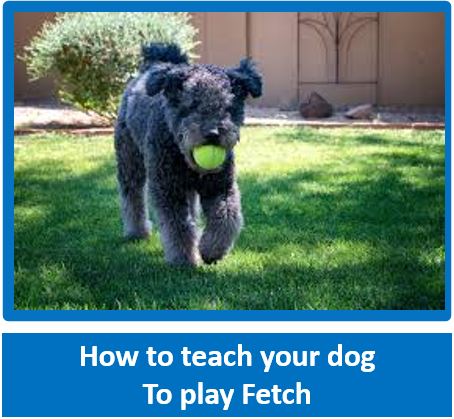
Please visit and LIKE / FOLLOW our Facebook Page and share with family, friends and on your own Facebook page, and ask them to share further – it is only by working together and sharing knowledge and education that we can improve the lives of dogs and assist owners. We do not inundate you with posts – an average of 5 per week, plus one Tip of the Week, and the odd informative post. Thank You!
Good Games / Bad Games
Guest article By Louise Thompson - Behaviourist
.

Bad games foster combat and competition between humans and dogs!!!
Games to avoid are the ones that involve any physical play fighting/wrestling or ‘rough housing’.
Competing for possession, such as ‘tug ‘o war’. Also a bad game if the pup is a ‘mouther’ or from a naturally dominant breed of dog.
Following the dogs lead games-such as-Chase games! Chase games are bad for dogs with potential aggressive traits.
Chase games give off the ‘wrong’ trigger for these kind of dogs. The dogs enjoy the predatory instinct of chasing children. The children then run faster/scream louder, which creates a better ‘prey’ target! The chasing is controlled by the pup/dog, and can also be accompanied by ‘nipping’ which in turn is rewarded by another lot of running/screaming (which is a form of negative reinforcement). This gives the dog/pup a feeling of control and with young pups, is a form of training them for future dominant predatory aggression.
People find it fun initially – dogs take it seriously!
Wild games in the house are a bad idea. Pups/dogs should learn acceptable indoor behaviour.
All and any ‘teasing games’. They may entertain the family when the pup is small. But remember, the games that ‘wind up’ a ‘would be calm’ pup or dog, are actually teaching him all the WRONG lessons, and setting a precedent for the animal who will in consequence have learned his lesson well! The end result of course will be a boisterous aggressive nuisance animal as an adult!
Good Games!
Good games promote co-operation and control!
Good games develop the working relationship between you and your pup/dog as well as reinforce your position in the combined human/canine home, and create trust and respect. Having a good adult dog is largely a matter of teaching the pup self control.
Tug ‘o war with the calm slightly submissive pup is ok as long as at the end of the game, the owner retains possession of the toy/prize!
Hide and seek (dog’s favourite toy or even the owner). The pup will utilise his natural ability to scent them out. Make sure the pup/dog is praised the second he succeeds!
Scent the toy. A really good game for those of you with small kids where pups/dogs get confused/mistaking children’s toys as their own. Make a game of it and scent mark all the kids’ toys. Simply dap a spot of Listerine on kid’s toys, (dogs/pups find the scent of this offensive) and place some of these marked toys together with the dog’s toys and watch the dog find his own toys. Don’t forget to praise him when he succeeds!
Do not give the pup/dog toys that resemble the Childs toys in any way. Avoid stuffed toys and avoid any toys that have a similarity to a baby’s toys.
Fetch – the handler must never grab the toy. The game never to develop into a chase game. A Long line may be utilised for the die-hard grab and dash pup, with the pup never being put in a position where he is able to disobey. If the pup/dog has gone out to fetch the toy and want to ‘hit and run’, he is called back with a smile, reward/treat and gently compelled by use of the line – hand over hand to return to the owner, with a smile and lots of verbal encouragement.
Another method is to use two toys – one to throw, and one to encourage the return and then just trade.
Beat the clock – pup/dog on leash (outside) and start to romp – excited voice tell him “ok, playtime’ anything to get him happy and excited. Right in the middle of the festivities stop – and give him the command. Immediately become still and silent, if need be gently help the pup to comply with the command, the instant that he obeys start the game again. If this is done correctly with the dog b being happy and exuberant during the play and absolutely silent and still after the command to stop is given, the dog will learn how to ‘turn on’ the game by obeying you instantly.
All games should be initiated by the owner, and played on the owner’s terms and at their invitation only!
Games to avoid are the ones that involve any physical play fighting/wrestling or ‘rough housing’.
Competing for possession, such as ‘tug ‘o war’. Also a bad game if the pup is a ‘mouther’ or from a naturally dominant breed of dog.
Following the dogs lead games-such as-Chase games! Chase games are bad for dogs with potential aggressive traits.
Chase games give off the ‘wrong’ trigger for these kind of dogs. The dogs enjoy the predatory instinct of chasing children. The children then run faster/scream louder, which creates a better ‘prey’ target! The chasing is controlled by the pup/dog, and can also be accompanied by ‘nipping’ which in turn is rewarded by another lot of running/screaming (which is a form of negative reinforcement). This gives the dog/pup a feeling of control and with young pups, is a form of training them for future dominant predatory aggression.
People find it fun initially – dogs take it seriously!
Wild games in the house are a bad idea. Pups/dogs should learn acceptable indoor behaviour.
All and any ‘teasing games’. They may entertain the family when the pup is small. But remember, the games that ‘wind up’ a ‘would be calm’ pup or dog, are actually teaching him all the WRONG lessons, and setting a precedent for the animal who will in consequence have learned his lesson well! The end result of course will be a boisterous aggressive nuisance animal as an adult!
Good Games!
Good games promote co-operation and control!
Good games develop the working relationship between you and your pup/dog as well as reinforce your position in the combined human/canine home, and create trust and respect. Having a good adult dog is largely a matter of teaching the pup self control.
Tug ‘o war with the calm slightly submissive pup is ok as long as at the end of the game, the owner retains possession of the toy/prize!
Hide and seek (dog’s favourite toy or even the owner). The pup will utilise his natural ability to scent them out. Make sure the pup/dog is praised the second he succeeds!
Scent the toy. A really good game for those of you with small kids where pups/dogs get confused/mistaking children’s toys as their own. Make a game of it and scent mark all the kids’ toys. Simply dap a spot of Listerine on kid’s toys, (dogs/pups find the scent of this offensive) and place some of these marked toys together with the dog’s toys and watch the dog find his own toys. Don’t forget to praise him when he succeeds!
Do not give the pup/dog toys that resemble the Childs toys in any way. Avoid stuffed toys and avoid any toys that have a similarity to a baby’s toys.
Fetch – the handler must never grab the toy. The game never to develop into a chase game. A Long line may be utilised for the die-hard grab and dash pup, with the pup never being put in a position where he is able to disobey. If the pup/dog has gone out to fetch the toy and want to ‘hit and run’, he is called back with a smile, reward/treat and gently compelled by use of the line – hand over hand to return to the owner, with a smile and lots of verbal encouragement.
Another method is to use two toys – one to throw, and one to encourage the return and then just trade.
Beat the clock – pup/dog on leash (outside) and start to romp – excited voice tell him “ok, playtime’ anything to get him happy and excited. Right in the middle of the festivities stop – and give him the command. Immediately become still and silent, if need be gently help the pup to comply with the command, the instant that he obeys start the game again. If this is done correctly with the dog b being happy and exuberant during the play and absolutely silent and still after the command to stop is given, the dog will learn how to ‘turn on’ the game by obeying you instantly.
All games should be initiated by the owner, and played on the owner’s terms and at their invitation only!




